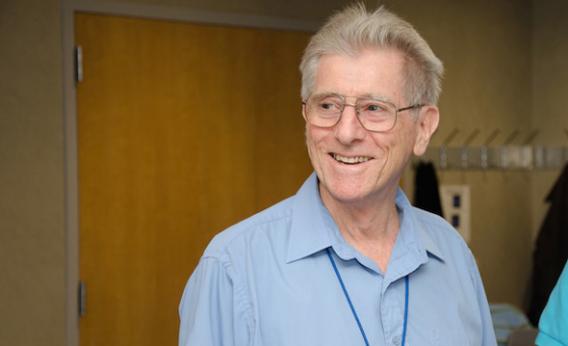Create a free profile to get unlimited access to exclusive videos, sweepstakes, and more!
Bruce Woodgate

Well, damn. I was just informed that Bruce Woodgate died.
Bruce was the principal investigator for the Space Telescope Imaging Spectrograph, or STIS, a camera that was placed on board the Hubble Space Telescope in 1997, and is still being used today. He led the development, design, and construction of the camera, seeing it go from an idea on paper to a working machine in orbit that revolutionized our understanding of a host of astronomical objects.
He was more than all that. He was my friend. I called him my “grandboss”; I worked on STIS from 1995–2000 as a contractor with NASA, and my boss reported to him.
The word I think of that fits him best is delightful. He had a great sense of humor, and he took a great amount of delight in the work. Whenever I saw him coming around the corner to my part of the office, I knew I was in for something fun, especially when a puckish grin hung on his face.
I remember one day he came to me with a piece of paper in his hand. It was a photo of the nearby active galaxy M87, a giant elliptical with a huge jet of matter and energy blasting out of its nucleus. He told me that he was interested in looking for positronium in it. This is a metastable atom like hydrogen, but instead of a proton orbited by an electron, it consisted of a positron, an anti-electron, orbited by an electron. It’s known to exist, and it’s known that the jet of M87 should have enough energy to create anti-electrons. If it existed there, and in large enough quantities, it should glow in the near-ultraviolet part of the spectrum where STIS was very sensitive.
I looked at him like he was nuts. “That’s nuts,” I said to him.
But it turns out he was able to get a couple of Hubble orbits worth of observations, and he wanted me to process the ultraviolet spectra (taking raw data off the telescope and calibrating it so it was scientifically useful—that processing was a major part of my work on STIS). I took on the task, knowing we’d never ever have a chance of finding positronium; the jet is hugely chaotic, screaming out from the core of the galaxy at a good fraction of the speed of light, as hot as the core of a star, intense internal magnetic fields twisted up ... it was as well behaved as a bag of cats. It was, um, hard to imagine a positron and electron having much of a chance of a life together. But I worked on it … and there wasn’t a hint of positronium in it. I still to this day think Bruce just wanted that data because no one had ever gotten good, clean two-dimensional UV spectra and images of M87, and he just wanted to see if there was anything cool there.
Funny thing, too: Working on that data, I wound up finding a key problem in the calibration we were having in the UV spectra. It turns out there was a noise issue, and I was able to trace it to the camera temperature; the warmer the detector, the noisier it was. I wrote some software that would correct for it in the calibration process, and the pesky problem disappeared. Bruce couldn’t have known that would happen, but his weird little project turned out to have a pretty solid impact on the data.
When it was done, I had to file all my notes. Since we were looking for antimatter in an alien galaxy, I created a file called “Warp Drive” and put it all there. He thought that was funny.
I could go on and on. Despite not finding that antimatter, STIS has done groundbreaking astronomical work. It took the first high-resolution 2D UV spectra of the supernova 1987A. It detected the exosphere of an exoplanet. It took amazing images and spectra of stars and planets forming, of black holes in the centers of distant galaxies, of dying stars at vast distances, of every kind of cosmic object you can imagine. It's a fantastic machine, and a reflection of the man who created it.
He was a good guy, and what I always thought a scientist should be: Curious, inquisitive, willing to try to figure out if something made sense (and willing to stick his neck out if it was anywhere near the borderline of possibility), and fascinated by the amazing and varied science his camera made possible.
So, thank you, Bruce. As if working on Hubble wasn’t fun enough, you made it even more delightful.














